-
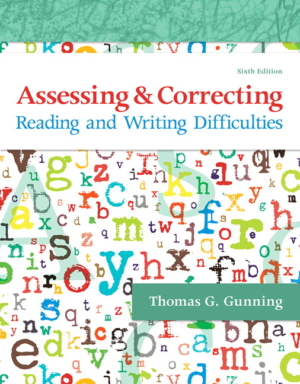 If you have taken this course for graduate credit through ArmchairEd, you cannot take the same course for clock hours through ArmchairEdClockHours. Click Here to buy the book direct from the publisher. Assessing and Correcting Reading and Writing Difficulties provides a comprehensive, practical approach that details—and illustrates through a wealth of examples—how to assess students and how to use assessment results to screen students, monitor progress, and provide effective instruction. Grounded in theory and research, yet practical in nature, this course provides 46 easy-to-follow, step-by-step sample lessons covering virtually every major skill or strategy for successfully assessing and instructing struggling readers of all ages. The emphasis is on teaching students’ strategies they can use independently for developing skills in word recognition, vocabulary, comprehension, reading in the content areas, writing, spelling, and studying. With extensive coverage of Response to Intervention and the impact of the Common Core State Standards, the course covers areas of assessment including basic concepts of tests and measurements; standardized measures, including curriculum-based instruments; and informal but highly regarded assessment methods such as the informal reading inventory, miscue analysis, running records, observation, think-alouds, checklists, conferences, rubrics, performance assessment holistic scoring of writing and portfolio assessment, and student self-assessment. It also includes extensive coverage of screening, progress monitoring, interim assessments, diagnosis, and outcome measures, with numerous suggestions for practice and reinforcement, including the use of technology. Click Here to download the course syllabus.
If you have taken this course for graduate credit through ArmchairEd, you cannot take the same course for clock hours through ArmchairEdClockHours. Click Here to buy the book direct from the publisher. Assessing and Correcting Reading and Writing Difficulties provides a comprehensive, practical approach that details—and illustrates through a wealth of examples—how to assess students and how to use assessment results to screen students, monitor progress, and provide effective instruction. Grounded in theory and research, yet practical in nature, this course provides 46 easy-to-follow, step-by-step sample lessons covering virtually every major skill or strategy for successfully assessing and instructing struggling readers of all ages. The emphasis is on teaching students’ strategies they can use independently for developing skills in word recognition, vocabulary, comprehension, reading in the content areas, writing, spelling, and studying. With extensive coverage of Response to Intervention and the impact of the Common Core State Standards, the course covers areas of assessment including basic concepts of tests and measurements; standardized measures, including curriculum-based instruments; and informal but highly regarded assessment methods such as the informal reading inventory, miscue analysis, running records, observation, think-alouds, checklists, conferences, rubrics, performance assessment holistic scoring of writing and portfolio assessment, and student self-assessment. It also includes extensive coverage of screening, progress monitoring, interim assessments, diagnosis, and outcome measures, with numerous suggestions for practice and reinforcement, including the use of technology. Click Here to download the course syllabus. -
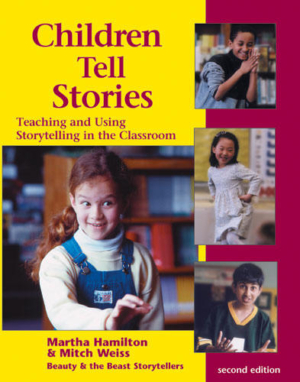 If you have taken this course for graduate credit through ArmchairEd, you cannot take the same course for clock hours through ArmchairEdClockHours. This course includes the newest research, links to current learning standards, and a variety of multicultural stories and resources that has validated the importance of storytelling in education. Literacy is more effectively taught when the language arts, such as reading, writing, speaking, listening, viewing, and visually representing, are seen as connected and equally important. Storytelling is one of the best ways to teach all of these literacy skills. When children engage in stories, they gain command over language, and increase their ability to understand detail and how stories hang together. If students are better at telling stories, they become better at writing and reading them. Course book also includes a DVD. Click Here to download the syllabus for this course. Click Here to buy the book directly from the publisher. What educators are saying about Children Tell Stories: I'm glad I have started on this exploration of teaching differently. I feel like it has renewed my love for teaching, back 18 years since I walked into my first classroom, as the teacher. The authors and examples in both the book and on the dvd empowered me to take the first step and try, that is really all I expect from my students everyday, no matter what the task, yet it was a little scary, I admit. I don't think I have thought about that for a long time, about the scariness of trying something different and new. Having experienced that feeling again, I have a lot more empathy for my students who come to school almost everyday and try something new! I hope I can keep learning and practicing stories to share with my students, in those little breaks in our day. I liked how it felt to be connected to them, and I want to feel that with every group of students I teach. I want to know them, and I want them to know me.~~Kristine K.
If you have taken this course for graduate credit through ArmchairEd, you cannot take the same course for clock hours through ArmchairEdClockHours. This course includes the newest research, links to current learning standards, and a variety of multicultural stories and resources that has validated the importance of storytelling in education. Literacy is more effectively taught when the language arts, such as reading, writing, speaking, listening, viewing, and visually representing, are seen as connected and equally important. Storytelling is one of the best ways to teach all of these literacy skills. When children engage in stories, they gain command over language, and increase their ability to understand detail and how stories hang together. If students are better at telling stories, they become better at writing and reading them. Course book also includes a DVD. Click Here to download the syllabus for this course. Click Here to buy the book directly from the publisher. What educators are saying about Children Tell Stories: I'm glad I have started on this exploration of teaching differently. I feel like it has renewed my love for teaching, back 18 years since I walked into my first classroom, as the teacher. The authors and examples in both the book and on the dvd empowered me to take the first step and try, that is really all I expect from my students everyday, no matter what the task, yet it was a little scary, I admit. I don't think I have thought about that for a long time, about the scariness of trying something different and new. Having experienced that feeling again, I have a lot more empathy for my students who come to school almost everyday and try something new! I hope I can keep learning and practicing stories to share with my students, in those little breaks in our day. I liked how it felt to be connected to them, and I want to feel that with every group of students I teach. I want to know them, and I want them to know me.~~Kristine K. -
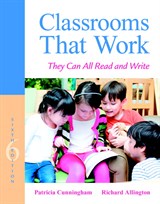 If you have taken this course for graduate credit through ArmchairEd, you cannot take the same course for clock hours through ArmchairEdClockHours. Click Here to buy the book Classrooms That Work 6th edition direct from Amazon. This popular course provides comprehensive, balanced, practical literacy instruction for all students in today’s increasingly diverse classrooms, especially students from culturally diverse backgrounds and those struggling with reading and writing. As the Common Core raises the bar for all children, Classrooms That Work helps educators meet the challenges by presenting lesson frameworks for providing reading and language arts instruction that helps all children achieve their highest literacy levels. In a clear, friendly writing style, the authors emphasize the importance of promoting the integration of phonics and literature-based process writing and reading instruction to enhance all students’ learning and reading skills. The book clarifies concepts, defines key terms, and offers just the right balance of research and practical coverage to make the content complete without being overwhelming. Click Here to download a course syllabus. What Educators are saying about Classrooms That Work: I really enjoyed reading all the ideas contained in the Rich Resources boxes. I am excited to try some of these suggestions in my classroom. Classrooms that Work is a wonderful resource for all elementary school teachers. It holds an abundance of practical and easily implemented ideas for teachers to create classrooms where children will thrive in an environment that fosters a love of reading and writing. L.S., New Jersey
If you have taken this course for graduate credit through ArmchairEd, you cannot take the same course for clock hours through ArmchairEdClockHours. Click Here to buy the book Classrooms That Work 6th edition direct from Amazon. This popular course provides comprehensive, balanced, practical literacy instruction for all students in today’s increasingly diverse classrooms, especially students from culturally diverse backgrounds and those struggling with reading and writing. As the Common Core raises the bar for all children, Classrooms That Work helps educators meet the challenges by presenting lesson frameworks for providing reading and language arts instruction that helps all children achieve their highest literacy levels. In a clear, friendly writing style, the authors emphasize the importance of promoting the integration of phonics and literature-based process writing and reading instruction to enhance all students’ learning and reading skills. The book clarifies concepts, defines key terms, and offers just the right balance of research and practical coverage to make the content complete without being overwhelming. Click Here to download a course syllabus. What Educators are saying about Classrooms That Work: I really enjoyed reading all the ideas contained in the Rich Resources boxes. I am excited to try some of these suggestions in my classroom. Classrooms that Work is a wonderful resource for all elementary school teachers. It holds an abundance of practical and easily implemented ideas for teachers to create classrooms where children will thrive in an environment that fosters a love of reading and writing. L.S., New Jersey -
 If you have taken this course for graduate credit through ArmchairEd, you cannot take the same course for clock hours through ArmchairEdClockHours. Click Here to buy the book Conversations with a Poet direct from the publisher. This course is divided into two sections. Section I discusses writing and the teaching of poetry, giving inside information not typically in educational courses and texts. The rational for teaching poetry and for teaching different poetry forms is included. Section II targets sixteen specific and different poetry forms, giving form, samples, and bibiolographical citations as models. Types of poetry in this course include the following: acrostic, ballad, blues, Cinquain, Haiku, limerick, riddle, sonnet, and many others. Click Here to download the course syllabus.
If you have taken this course for graduate credit through ArmchairEd, you cannot take the same course for clock hours through ArmchairEdClockHours. Click Here to buy the book Conversations with a Poet direct from the publisher. This course is divided into two sections. Section I discusses writing and the teaching of poetry, giving inside information not typically in educational courses and texts. The rational for teaching poetry and for teaching different poetry forms is included. Section II targets sixteen specific and different poetry forms, giving form, samples, and bibiolographical citations as models. Types of poetry in this course include the following: acrostic, ballad, blues, Cinquain, Haiku, limerick, riddle, sonnet, and many others. Click Here to download the course syllabus. -
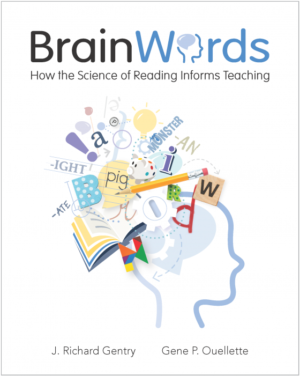
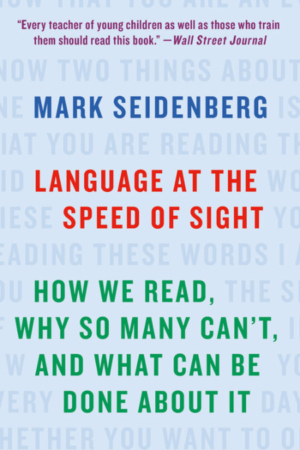 If you have taken this course for graduate credit through ArmchairEd, you cannot take the same course for clock hours through ArmchairEdClockHours.
If you have taken this course for graduate credit through ArmchairEd, you cannot take the same course for clock hours through ArmchairEdClockHours.Understanding the science of reading is more important than ever. This course draws on cutting-edge research in machine learning, linguistics, and early childhood development. The past two decades have brought giant leaps in our understanding of how the brain works. In this course, you will learn how children’s brains develop as they become readers and discover ways you can take concrete steps to promote this critical developmental passage.
Using a research-based framework of “brain words”—dictionaries in the brain where students store and automatically access sounds, spellings, and meanings—the course offers a wealth of information that will transform thinking and practice:- Reading and neurological circuitry, including evidence that spelling is at the core of the reading brain
- Tools to recognize what works, what doesn’t, and why
- Practical classroom activities for daily teaching and student assessment
- Insights about what brain research tells us about whole language and phonics-first movements
- Deepened understanding of dyslexia through the enhanced lens of brain science
-
 If you have taken this course for graduate credit through ArmchairEd, you cannot take the same course for clock hours through ArmchairEdClockHours. This course is rich and comprehensive, with practical insights to the frontier of early literacy. Grounded in research and extensive experience in prekindergarten classrooms the course demonstrates how to:
If you have taken this course for graduate credit through ArmchairEd, you cannot take the same course for clock hours through ArmchairEdClockHours. This course is rich and comprehensive, with practical insights to the frontier of early literacy. Grounded in research and extensive experience in prekindergarten classrooms the course demonstrates how to:- Create a classroom community that is play-based, and prepares children for the literacy-rich world in which they live
- Promote constructive learning through inquiry
- Recognize the language and literacy behaviors and understandings that are appropriate instructional goals for preschoolers
- Use powerful and playful ways to guide children to learn about letters, sounds, and words
- Support emergent readers and writers through an array of literacy activities.
-

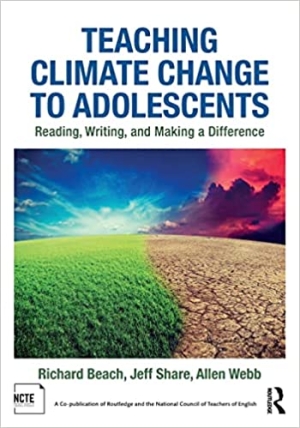 If you have taken this course for graduate credit through ArmchairEd, you cannot take the same course for clock hours through ArmchairEdClockHours. Teaching Climate Change to Adolescents Nearly one-third of the secondary science standards relate to climate science, but teachers need design and implementation support to create empowering learning experiences centered around the climate crisis. Teaching Climate Change to Adolescents is THE essential resource for middle and high school teachers to help their students understand and address the urgent issues and challenges facing life on Earth today. Classroom activities have been written and used by teachers and show students posing questions, engaging in argumentative reading, writing, and critical analysis, interpreting portrayals of climate change in literature and media, and adopting advocacy stances to promote change. The course illustrates climate change fitting into existing courses. Click Here to Buy Teaching Climate Change to Adolescents direct from the publisher. Click Here to Buy Teaching Climate Change to Grades 6-12 direct from the publisher. Click Here to preview the course syllabus.
If you have taken this course for graduate credit through ArmchairEd, you cannot take the same course for clock hours through ArmchairEdClockHours. Teaching Climate Change to Adolescents Nearly one-third of the secondary science standards relate to climate science, but teachers need design and implementation support to create empowering learning experiences centered around the climate crisis. Teaching Climate Change to Adolescents is THE essential resource for middle and high school teachers to help their students understand and address the urgent issues and challenges facing life on Earth today. Classroom activities have been written and used by teachers and show students posing questions, engaging in argumentative reading, writing, and critical analysis, interpreting portrayals of climate change in literature and media, and adopting advocacy stances to promote change. The course illustrates climate change fitting into existing courses. Click Here to Buy Teaching Climate Change to Adolescents direct from the publisher. Click Here to Buy Teaching Climate Change to Grades 6-12 direct from the publisher. Click Here to preview the course syllabus. -
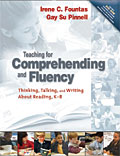 This course will be dropped on June 30, 2024 If you have taken this course for graduate credit through ArmchairEd, you cannot take the same course for clock hours through ArmchairEdClockHours. Click Here to buy the book Teaching for Comprehending and Fluency direct from the publisher. This course offers a complete picture of how to skillfully teach meaning making and fluency within any instructional context. It provides frameworks for high-quality instruction that describe appropriate expectations for comprehending, fluency, and vocabulary development. The course provides effective teaching strategies for the following: comprehending, word solving fluency and vocabulary; writing about reading in a variety of genres and using writing as a tool for thinking; using guided reading with fiction and nonfiction books; discussing books during interactive read-aloud and literature study; and taking part in shared and performance reading. Instruction is included for running reading records of reading behavior to assess comprehension and fluency, and to then use those assessments to inform and differentiate teaching. Click Here to download the course syllabus. What educators are saying about Teaching for Comprehending and Fluency: "I have always done read alouds in my classroom. I do them everyday, religiously. I think I might love the read aloud time even more than my students. What I love the most about read alouds is watching my students' faces show their interest, confusion, concern, excitement, sadness and sometimes complete and and utter shock. This special moment in my teaching experience is the best thing about teaching. The fact that I can help my students feel something about a book is a skill that I absolutely love to see take place. ~~Heather W.
This course will be dropped on June 30, 2024 If you have taken this course for graduate credit through ArmchairEd, you cannot take the same course for clock hours through ArmchairEdClockHours. Click Here to buy the book Teaching for Comprehending and Fluency direct from the publisher. This course offers a complete picture of how to skillfully teach meaning making and fluency within any instructional context. It provides frameworks for high-quality instruction that describe appropriate expectations for comprehending, fluency, and vocabulary development. The course provides effective teaching strategies for the following: comprehending, word solving fluency and vocabulary; writing about reading in a variety of genres and using writing as a tool for thinking; using guided reading with fiction and nonfiction books; discussing books during interactive read-aloud and literature study; and taking part in shared and performance reading. Instruction is included for running reading records of reading behavior to assess comprehension and fluency, and to then use those assessments to inform and differentiate teaching. Click Here to download the course syllabus. What educators are saying about Teaching for Comprehending and Fluency: "I have always done read alouds in my classroom. I do them everyday, religiously. I think I might love the read aloud time even more than my students. What I love the most about read alouds is watching my students' faces show their interest, confusion, concern, excitement, sadness and sometimes complete and and utter shock. This special moment in my teaching experience is the best thing about teaching. The fact that I can help my students feel something about a book is a skill that I absolutely love to see take place. ~~Heather W. -
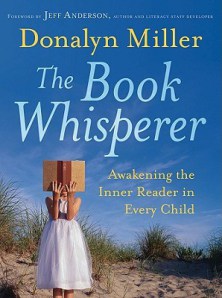 If you have taken this course for graduate credit through ArmchairEd, you cannot take the same course for clock hours through ArmchairEdClockHours. Click Here to buy the book. This course takes an in-depth look at powerful yet unconventional instructional reading approaches. The author discards book reports, comprehension worksheets, and other aspects of conventional instruction. The author gives students individual choice in what they read combined with an independent reading program. Building a classroom library of high-interest books, and modeling appropriate and authentic reading behaviors are essentials of developing motivated readers. Using this approach, students read more, achieve high scores on standardized tests, and internalize a love for reading. This course helps teachers to support students of all levels on theirj path to reading success. It also includes a comprehensive list of books students love most, enabling students to discover the rewards of reading and literature. For grades 3 and up.. Click Here to download the course syllabus.
If you have taken this course for graduate credit through ArmchairEd, you cannot take the same course for clock hours through ArmchairEdClockHours. Click Here to buy the book. This course takes an in-depth look at powerful yet unconventional instructional reading approaches. The author discards book reports, comprehension worksheets, and other aspects of conventional instruction. The author gives students individual choice in what they read combined with an independent reading program. Building a classroom library of high-interest books, and modeling appropriate and authentic reading behaviors are essentials of developing motivated readers. Using this approach, students read more, achieve high scores on standardized tests, and internalize a love for reading. This course helps teachers to support students of all levels on theirj path to reading success. It also includes a comprehensive list of books students love most, enabling students to discover the rewards of reading and literature. For grades 3 and up.. Click Here to download the course syllabus. -

 If you have taken this course for graduate credit through ArmchairEd, you cannot take the same course for clock hours through ArmchairEdClockHours The current emphasis on the body of research known as the "Science of Reading" has renewed the reading wars and raised challenging questions for balanced literacy teachers about the best way to teach reading. Instead of fueling the debate, this course organizes essential educational theory and effective instructional practices under a complete, layered intervention model. The course focuses on scientifically sound shifts reading teachers can make to strengthen their approach to early reading instruction. Click Here to Buy The Comprehensive Intervention Model direct from the publisher Click Here to Buy Shifting the Balance direct from the publisher Click Here to preview the course syllabus.
If you have taken this course for graduate credit through ArmchairEd, you cannot take the same course for clock hours through ArmchairEdClockHours The current emphasis on the body of research known as the "Science of Reading" has renewed the reading wars and raised challenging questions for balanced literacy teachers about the best way to teach reading. Instead of fueling the debate, this course organizes essential educational theory and effective instructional practices under a complete, layered intervention model. The course focuses on scientifically sound shifts reading teachers can make to strengthen their approach to early reading instruction. Click Here to Buy The Comprehensive Intervention Model direct from the publisher Click Here to Buy Shifting the Balance direct from the publisher Click Here to preview the course syllabus. -
 If you have taken this course for graduate credit through ArmchairEd, you cannot take the same course for clock hours through ArmchairEdClockHours. Built on a rigorous research base and to emphasize student diversity, equity, and inclusion, The New Classroom Instruction That Works provides a streamlined focus on the 14 instructional strategies proven to promote deep, meaningful, and lasting learning:
If you have taken this course for graduate credit through ArmchairEd, you cannot take the same course for clock hours through ArmchairEdClockHours. Built on a rigorous research base and to emphasize student diversity, equity, and inclusion, The New Classroom Instruction That Works provides a streamlined focus on the 14 instructional strategies proven to promote deep, meaningful, and lasting learning:- Cognitive interest cues
- Student goal setting and monitoring
- Vocabulary instruction
- Strategy instruction and modeling
- Visualizations and concrete examples
- High-level questions and student explanations
- Guided initial application with formative feedback
- Peer-assisted consolidation of learning
- Retrieval practice
- Spaced and mixed independent practice
- Targeted support
- Cognitive writing
- Guided investigations
- Structured problem solving
-
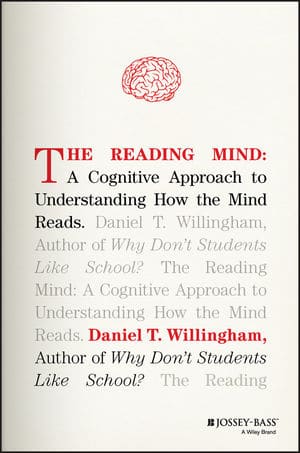 The Reading Mind explains the fascinating journey from seeing letters, then words, sentences, with the author highlighting each step along the way. This course covers every aspect of reading, starting with two fundamental processes: reading by sight and reading by sound. It also addresses reading comprehension at all levels, from reading for understanding at early levels to inferring deeper meaning from texts and novels in high school. The course considers the undeniable connection between reading and writing, as well as the important role of motivation as it relates to reading. It tackles the intersection of our rapidly changing technology and its effects on learning to read and reading. Click Here to purchase the text direct from the publisher Click Here to download the syllabus
The Reading Mind explains the fascinating journey from seeing letters, then words, sentences, with the author highlighting each step along the way. This course covers every aspect of reading, starting with two fundamental processes: reading by sight and reading by sound. It also addresses reading comprehension at all levels, from reading for understanding at early levels to inferring deeper meaning from texts and novels in high school. The course considers the undeniable connection between reading and writing, as well as the important role of motivation as it relates to reading. It tackles the intersection of our rapidly changing technology and its effects on learning to read and reading. Click Here to purchase the text direct from the publisher Click Here to download the syllabus -
 If you have taken this course for graduate credit through ArmchairEd, you cannot take the same course for clock hours through ArmchairEdClockHours. Click Here to buy the book When Readers Struggle: Teaching That Works direct from the publisher. Educators want young students to think and behave like effective readers who not only solve words skillfully but comprehend deeply and read fluently. To achieve this goal, we need to place students in situations where they can succeed and then provide powerful teaching. The course offers numerous examples and descriptions of instruction that can help initially struggling readers become strategic readers. When Readers Struggle: Teaching That Works focuses on small-group intervention and individual interactions during reading and writing. It illustrates how to closely observe readers to make the best possible teaching decisions for them as well as how to support struggling readers in whole-class settings. Click Here to download the course syllabus.
If you have taken this course for graduate credit through ArmchairEd, you cannot take the same course for clock hours through ArmchairEdClockHours. Click Here to buy the book When Readers Struggle: Teaching That Works direct from the publisher. Educators want young students to think and behave like effective readers who not only solve words skillfully but comprehend deeply and read fluently. To achieve this goal, we need to place students in situations where they can succeed and then provide powerful teaching. The course offers numerous examples and descriptions of instruction that can help initially struggling readers become strategic readers. When Readers Struggle: Teaching That Works focuses on small-group intervention and individual interactions during reading and writing. It illustrates how to closely observe readers to make the best possible teaching decisions for them as well as how to support struggling readers in whole-class settings. Click Here to download the course syllabus.
